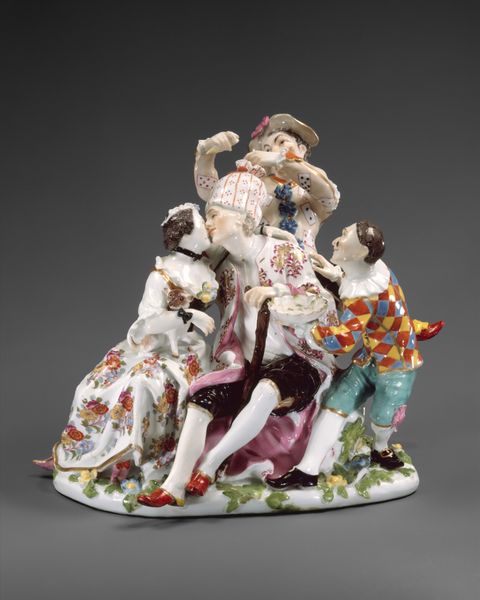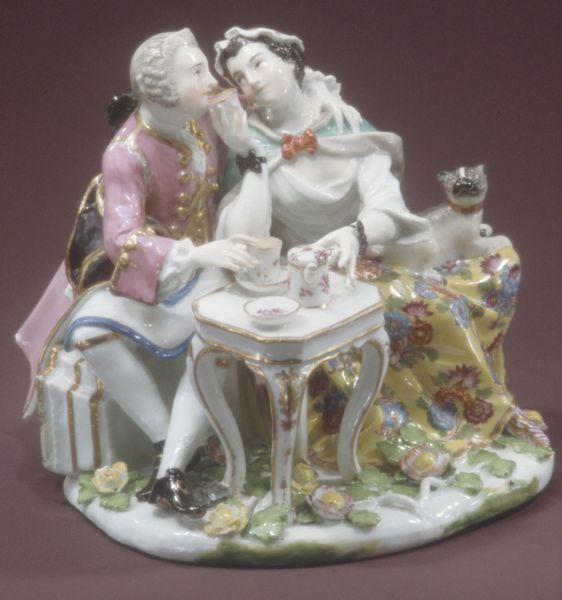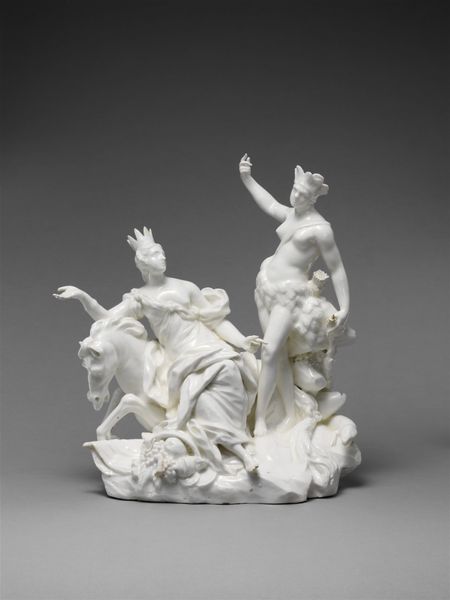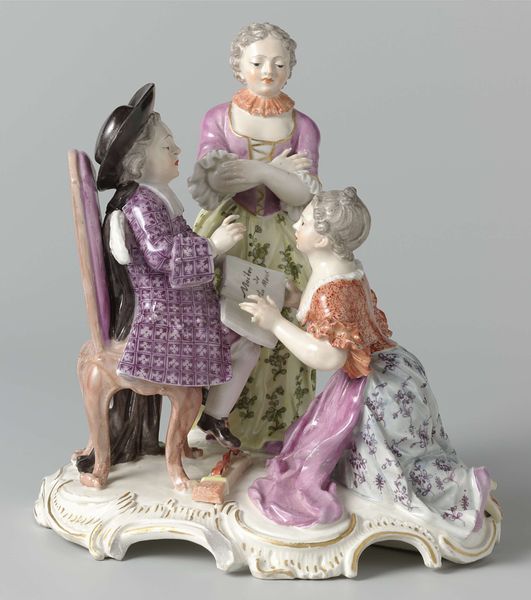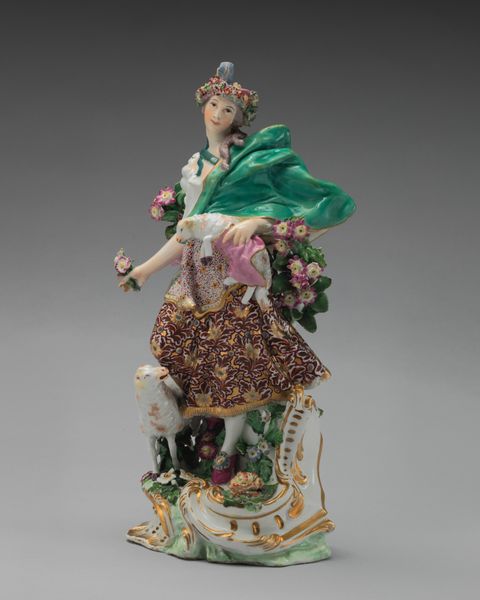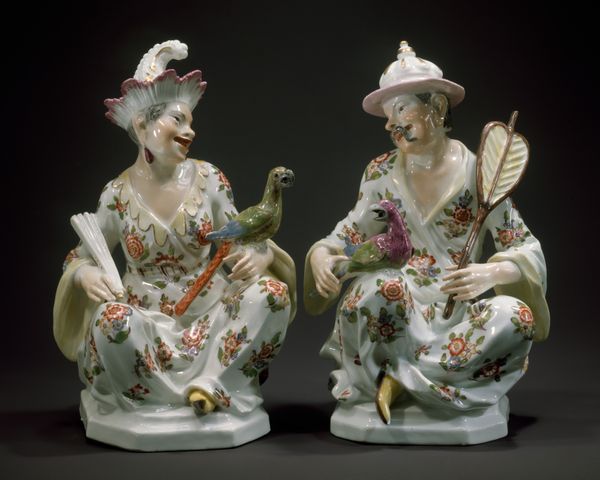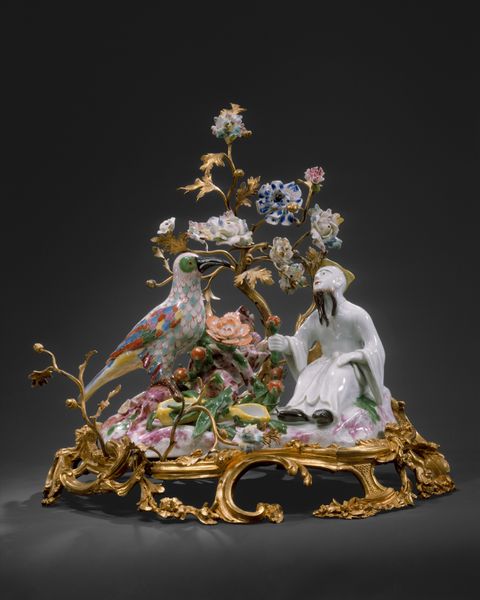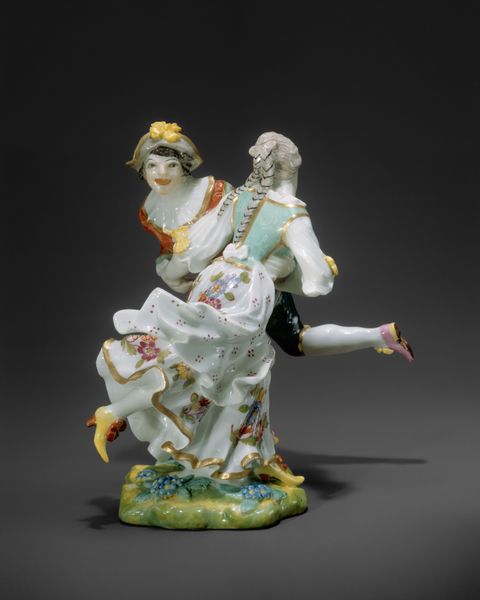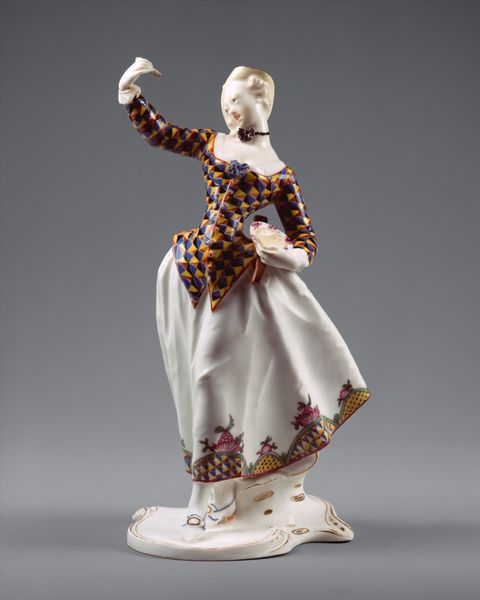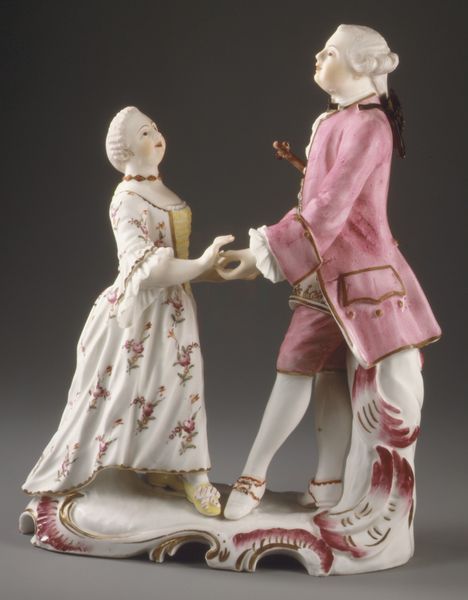
Dimensions: 9 1/16 × 9 9/16 in. (23 × 24.3 cm)
Copyright: Public Domain
Editor: So, this is "Three Fates" made in 1773, from the Frankenthal Porcelain Manufactory. It's porcelain. It has this sort of dreamy quality, I guess. The figures are very ornate. What do you make of it? Curator: The immediate visual cues point to a Rococo interpretation of a classical subject. The Three Fates, typically associated with the thread of life, are rendered in soft porcelain, adorned with floral patterns – a deliberate choice to domesticate and beautify what is, essentially, an allegory of destiny. How does that interplay of the grand narrative and decorative aesthetic strike you? Editor: I hadn't considered the domestic aspect of the floral designs clashing with the Fates themselves. Are there other clues beyond the surface that we should consider? Curator: Notice the child figure present, seemingly oblivious, drinking from a shell. The Fates are normally portrayed as stern, elderly women. But here we have youthful figures in what is essentially a garden of pleasure, seemingly unconcerned with mortality. They become less figures of inevitability and more figures in a tableau, distanced from their profound significance. What implications does that shift have in your eyes? Editor: So the artist is creating distance, suggesting maybe a less rigid view of fate, or perhaps a privileged detachment from it? Curator: Precisely! By subverting the traditional imagery, Frankenthal subtly comments on the prevailing cultural attitudes towards mortality and destiny during that era. It’s like a visual poem. Editor: It's really amazing to see how the symbolism interacts with the decorative elements in unexpected ways! Curator: Yes, the true value lies in recognizing how artists can subvert cultural memory within aesthetic refinement. It is so rewarding.
Comments
No comments
Be the first to comment and join the conversation on the ultimate creative platform.


